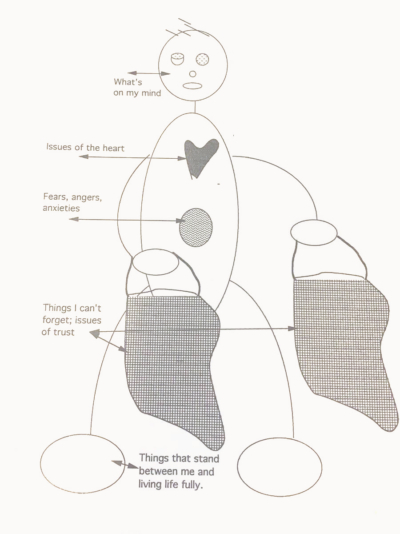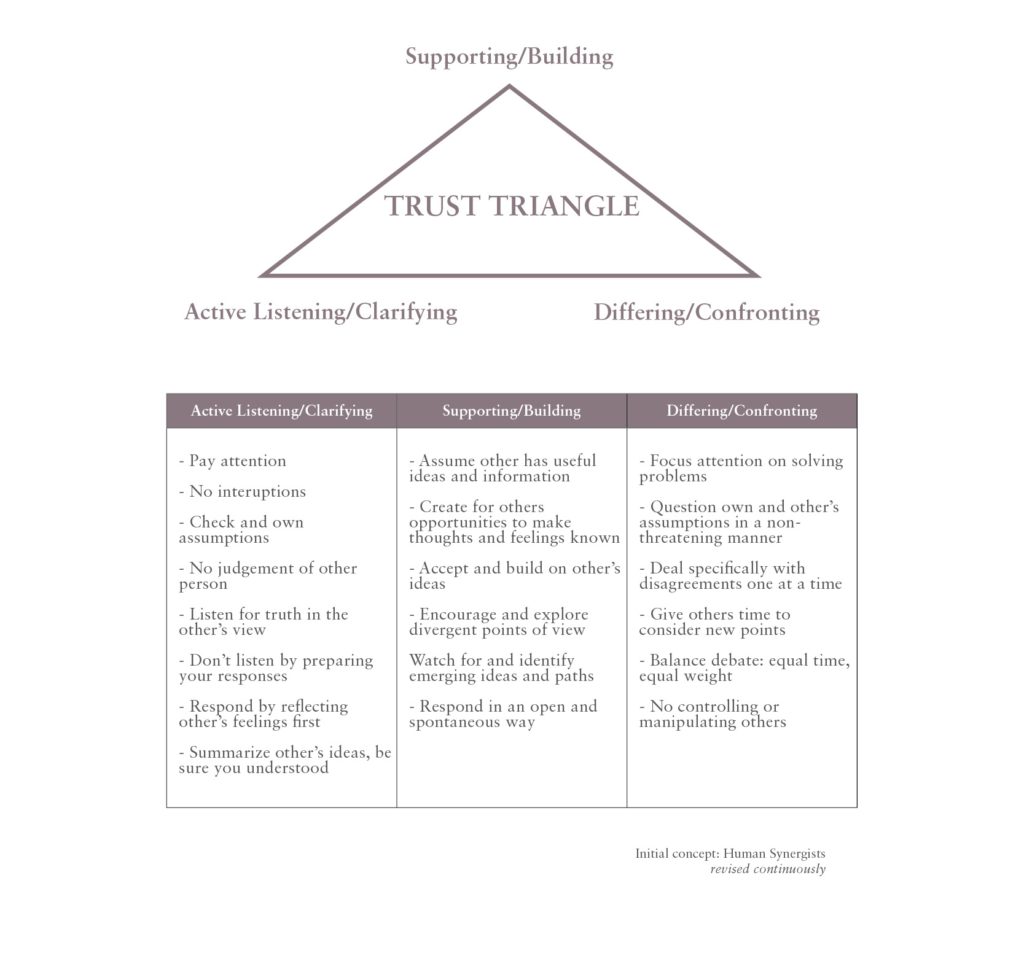Looking inside E for Engage means exploring Attitude. Don’t underestimate this word. Attitude is the key that unlocks the conflict. Two attitudes, at the very least, come into play in a conflict: yours and the attitude of your partner in conflict. If either of you lacks the right attitude, Engagement fails.
Deep Roots
In the first case study examing conflict as transformer we witnessed two people with a 20-year history based on an unfortunate misunderstanding. They lacked the skills to resolve a conflict at its birth.
Each person’s daily attitude was positive, they were problem solvers, and both originally held a positive attitude toward the other. Both responded clearly and positively to these three questions:
-
- Are you willing to listen and seek to understand the other person’s point of view (Yes)
- What would it take for you to be willing to let go of this conflict? (An apology)
- Are you willing to work together until we achieve a permanent resolution? (Yes)
These three questions are about three basic skills that it will take to work through the conflict:
-
- Active Listening/Clarifying
- Differing/Confronting
- Supporting/Building
If either conflict partner believes the other’s Attitude will be to Not Listen, there is no place to begin. They might believe the other will confront to win, not to seek to understand the difference. And if either believes the other person’s Attitude won’t be to build relationship, to support each other, then – why try? There is wisdom in that question. There is no trust in the relationship.
Each person considers what price is going to be paid to resolve the conflict. If the price is more costly than making peace, there will be no Engage. Both may sit in a room, have a conversation, even make an agreement, a treaty, but the conflict will not be resolved. In Case Study #1 both people knew the price for not working the conflict might be loss of their work position. They had to trust the other person enough that Engage can be risked – at the very least because the price not to engage was high.
Trust Triangle
The three Trust Triangle skills have very specific behavioral indicators of success. Ask “Do I have these behaviors? Does my conflict partner?” In our first Case Study as intervener, I asked each person in the individual interview to rate themselves and their potential conflict partner on these behaviors, using a 0 to 3 scale, with 3 being fully competent. It’s useful to consider the conflict partner as they are generally in the world, not when with you and on the defensive. The task is to determine if the skills exist, and, if not, does the person have a willing Attitude to improve.
Each person considers what price is going to be paid to resolve the conflict. It the price is more costly than making peace, there will be no Engage. Both may sit in a room, have a conversation, even make an agreement, a treaty, but the conflict will not be resolved.
Trust Triangle skills are fundamental to more than conflict management. Each behavior can be learned, most often by practicing with people, from those met casually to dear friends. Ask a friend to score you, and you score them, and then talk over your results. Put copies of the Trust Triangle around where you can see them (back of the exit door, on a kitchen cabinet, near the bathroom sink, at work… ) Choose one skill set every day, or just one behavior, and practice in every conversation.
Remember the image in the Baggage blog? And the idea of how you are trailing hooks wherever you go? Those hooks will snag little conflicts similar to the one you want to work through. The universe will bring you multiple opportunities to practice your Listening/Confronting/Supporting skills. Embrace them; have the Attitude of “Oh, good. I’m learning how. I’m getting ready.”
Start where you are safe.
Circling the Conflict: Finding the Root

Do you experience yourself circling the conflict in your mind or emotionally? Does it feel similar to how a dog or cat turns around and around before they lie down? Take advantage of those moments. Give yourself permission to think/feel about the conflict. Draw a circle and divide it in half. On one side list everything you know, think or feel about the conflict. Some notes will be facts (dates, occasions, things said), and some will be emotions, wants, needs. Include conjecture if you are thinking it: the reason you think your conflict partner said/did something. Don’t judge the notes or yourself. Keep it with you, and as you think of new things, note them down. One person drew a circle on a flip chart pinned to the closet door, and each evening transcribed the day’s notes to it. Some people find sticky notes are helpful. Others keep them electronically.
When nothing new has surfaced for several days, you may be mostly finished with taking notes. Look over everything you have at least once a day. Cross off anything you are willing to let go. You may decide to write it back in again tomorrow – that’s OK. Some things you know you want to discuss… make a dotted line to the empty side of the circle, and record what you need or want from a discussion about that fact or feeling. You may discover that one dotted line is connected to another… connect them – maybe you color them the same color. The moment will come when you know the Root of this conflict. Circle it on your map. Hold it in your heart. If you choose, having the Root clear allows you to let the rest go.
You are making a living map of your Attitude towards this conflict. Why do this? Because you have total power over one thing about this conflict: you can work your Attitude towards it.
My grandmother’s version of this was to name the conflict and write it out on a piece of paper, folded and stored in her desk’s center drawer. Once a month on a Sunday afternoon she would take out the folded pieces of paper, sometimes make a note, sometimes throw them into the trash can. One I know she kept for several years. What she didn’t do was “fret away time better spent happy.”
In my grandmother’s life, the people in her conflicts were also nodes in her web of relationships. She never discussed issues, never put people in a position of having to choose which side to support. There may be people in your life that know about your conflict. Discussions with them create a third point of view and one that is not in the conflict. What is your motivation for discussing this conflict with them? It’s useful to contain your exploration, both in terms of your energy and your focus. It’s even more important that if the person also knows your conflict partner they are not drawn into the conflict by discussions with you. In the first case study, we observed how the conflict partners first worked their conflict and then planned together how to approach their web. The web can choose sides, it can support healing or disruption. Each node is another point signaling support or disruption for your exploration. Unless you have need of specific information, leave the webs alone.
One exception to this rule is if your culture has built-in conflict negotiators and methods. If you trust your culture, its methods, and the negotiator, explore within the framework if it’s useful to you. Most cultures based on competitive practices do not have this advantage.
Choosing to Engage (or Not)
The day will come when you realize things have changed. You may realize “I’m ready to work on the Big Conflict. “ Or, you don’t know what happened, but it’s as if the conflict went away. The situation is workable. Or, don’t be surprised if your potential conflict partner initiates the healing conversation with you.
There is a trust-building exercise where two people stand back to back, and begin to slowly move their feet forward, keeping their backs together. Eventually, they end up sitting back to back on the floor. Then they get up the same way – slowly, leaning on each other.
Conflict partners are similar… they are leaning on each other, holding the conflict up. If one of them releases the connection, the other person is immediately off balance. People feel these shifts across the world from one another; suddenly a son picks up the phone and calls home, a lost friend connects on social media. The message may be reconciliation: Hurrah! But it may be the conflict partner needs you to connect in order to restore pressure. It’s not your work to help them regain their balance. So one choice is to refuse to Engage, and to let it go, truly let it go. If you can say honestly “I have no conflict with you” the person will hear the truth in your voice.
Levels of Trust
-
-
-
- I trust you are listening to me and you hear me.
- I trust you understand what my interests are.
- I trust you support my interests.
- I trust you will act in my best interest even when I am not present.
- I trust you understand and support my interests enough to make decisions on my behalf.
-
-
Remember these three questions? Ask them of your conflict partner. Do you believe their answers? If so, you may both have the right Attitude to Engage about this conflict.
A great way to start is to use the Trust Triangle Chart. Have them score themselves and you. Start with a conversation about those behaviors, and prepare some ground rules for your conflict conversation. Can’t imagine having that conversation with this person? Time to consider if their Attitude will cause the conflict engagement to fail, and, if so, to withdraw.
If you choose to Engage with the conflict partner, we’ll explore how to Approach the conversation in a later blog in this series. But first we will explore Attitude: Styles of Conflict and then Attitude: Unto All Generations, considering generational conflicts, and how to uncover ancient Roots with multi-layered Webs.
EDGE: Root & Web
Exploring Conflict as Transformer.





